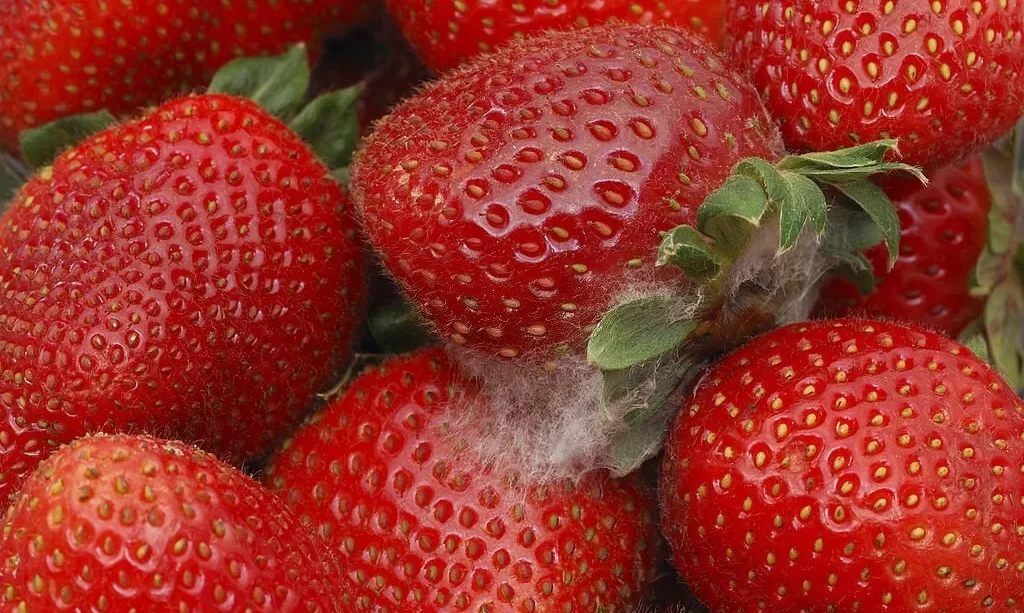Strawberries, with their vibrant red color and sweet, juicy taste, are a beloved fruit enjoyed in various culinary creations. Yet, for all their deliciousness, strawberries are notorious for one frustrating problem: they seem to mold astonishingly fast. In this article, we’ll uncover the science behind why strawberries tend to become victims of mold so swiftly and explore factors like their high water content that contribute to this phenomenon. Understanding the causes can empower you to take steps to prolong the freshness of your precious strawberries.
- 18 Servings
- 630 Calories
- Perfect for Food Storage, Emergencies, Survival, Camping, and Everyday Use.
- Ready to eat as a delicious snack.
- Up to a 30 Year Shelf Life.
High Water Content
One of the primary culprits behind the rapid molding of strawberries is their remarkably high water content. These delectable red berries are composed of approximately 90% water, which creates an environment conducive to mold growth. This inherent moisture within strawberries serves as an open invitation for mold spores to flourish and eventually spoil these beloved fruits. Let’s delve into this watery characteristic and its role in the swift demise of strawberries.
Fragile Skin
Another factor contributing to the rapid molding of strawberries is their fragile skin. Unlike some fruits with thicker, protective peels, strawberries have delicate and thin skin that is easily damaged. Even minor bruising, punctures, or handling can create openings that allow mold spores to infiltrate the berry. Once inside, mold can spread quickly throughout the strawberry, causing it to deteriorate at an accelerated pace.
Natural Sugars
Strawberries are not only known for their refreshing sweetness but also for their natural sugar content. This sweetness, while a delight to our taste buds, can be a double-edged sword. Mold, like other microorganisms, thrives on sugars. The sugar content in strawberries serves as a readily available food source for mold, providing it with the energy it needs to grow and reproduce. Consequently, the high sugar content of strawberries can expedite mold development, leading to their rapid spoiling.
Warm Temperatures
Strawberries are often cultivated in warm climates or during the summer months when temperatures are elevated. While this is ideal for the growth of these luscious berries, it also creates an environment conducive to mold growth. Warm temperatures accelerate the metabolic processes of both strawberries and mold spores. As a result, strawberries become even more susceptible to mold development, making it essential to store them properly and consume them promptly in hot weather.
Ethylene Gas Production
Strawberries are not just passive fruits; they also produce ethylene gas, a natural plant hormone that plays a role in ripening. However, this gas production can have unintended consequences when it comes to preserving strawberries. Ethylene gas can hasten the ripening and spoilage of neighboring fruits and vegetables. Placing strawberries near ethylene-sensitive produce, such as leafy greens or certain fruits like apples, can inadvertently speed up their own molding process, making it crucial to be mindful of storage choices in your kitchen.
Lack of Air Circulation
Proper air circulation is essential for maintaining the freshness of strawberries. When strawberries are stored in conditions where air does not circulate freely, such as tightly packed together or in closed containers, moisture can accumulate around the berries. This trapped moisture creates a microenvironment where mold can thrive, as it prefers damp conditions. Ensuring good air circulation around your strawberries can help mitigate this issue.
Mold Spores in the Environment
Mold spores are a natural part of the environment, present in the air and on various surfaces. These tiny spores are always around, and when strawberries come into contact with them, especially in humid environments, they are at an increased risk of developing mold. Even the cleanest of environments can harbor mold spores, making it a universal challenge to prevent mold growth on strawberries.
Conclusion
Strawberries, while undeniably delicious, are prone to mold quickly due to their high water content, fragile skin, natural sugars, warm temperatures, ethylene gas production, susceptibility to mold spores in the environment, and the lack of proper air circulation in storage. Understanding these factors can help you take proactive measures to extend the freshness of your strawberries. To enjoy your strawberries at their best, handle them gently, store them in a cool and dry place, and consume them promptly. These practices can help you savor the delightful taste of strawberries while minimizing food waste.




